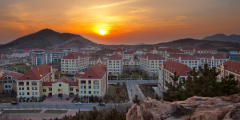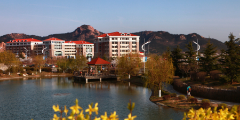刘茜 | ||||||
职称: | 副教授硕士生导师 |
| ||||
个人邮箱: | liuqian@ouc.edu.cn | |||||
地址: | 海洋科技大楼C212 | |||||
|
| |||||
研究领域或方向: | ||||||
利用多参数化学示踪剂(例如,放射性镭、氡同位素、13C稳定同位素,稀土元素)研究化学海洋学过程: (1)海底地下水排放对近海碳循环和海洋酸化的影响 (2)滨海湿地碳的横向输送及其调控过程 (3)水团来源和输送路径的示踪与量化 (4)地下河口CO2系统及痕量元素的生物地球化学过程 | ||||||
|
| |||||
教育经历: | ||||||
2009.2-2010.9; 2012.2-3伍兹霍尔海洋研究所(美国),海洋化学地质化学系,联合培养博生 2007.9-2012.10厦门大学,环境与生态学院,博士 2004.9-2007.6中国海洋大学,环境科学与工程学院,硕士 2000.9-2004.6中国海洋大学,环境科学与工程学院,学士 | ||||||
| ||||||
工作经历: |
|
| ||||
2018.01-至今中国海洋大学,海洋化学理论与工程技术教育部重点实验室,副教授 2016.09-2018.01 厦门大学,近海海洋环境科学国家重点实验室,助理研究员 2014.08-2016.09 富山大学/西北太平洋区域环境合作中心,日本,博士后 2012.11-2014.08 厦门大学,近海海洋环境科学国家重点实验室,助理研究员 | ||||||
| ||||||
学术兼职: |
|
| ||||
Ø Review Editor: Frontiers in Marine Science; Frontiers in Chemistry; Frontiers in Earth Science Ø Journal Reviewers: Progress in Oceanography; Marine Chemistry; Global Biogeochemical Cycles; Continental Shelf Research; Journal of Environmental Radioactivity; Applied Geochemistry; Hydrological Processes; Journal of Coastal Research. | ||||||
| ||||||
主持或参与的项目: |
|
| ||||
(1)2020-2022,红树林湿地溶解无机碳的地下水输出及其调控,国家自然科学基金青年科学基金,#41906038,主持 (2)2019-2023, 海洋荒漠区常量和微量营养物质的来源、通量及其时空分布格局, 国家自然科学基金重大项目子课题,#41890801,参与 (3)2019-2021,全球气候变化对东海生态环境变化的驱动机制研究,国家自然科学基金国际(地区)合作与交流项目,#419115400,参与(已结题) (4)2018-2020, 红树林湿地地下水输送的稀土元素通量及过程,海洋化学理论与工程技术教育部重点实验室自主科研基金“自由探索性课题”, 主持(已结题) (5)2016-2018, 红树林-河口系统多界面碳循环过程与通量,MEL自主研究课题,MELRI1603,参与(已结题) (6)2014-2018, S-13 Development of Coastal Management Method to Realize the Sustainable Coastal Sea, 第三子课题-Development of methods for ocean managements in the Japan Sea, an international enclosed coastal sea that includes continental shelves and island, 日本环境署项目,参与(已结题) | ||||||
| ||||||
学术成果: |
|
| ||||
(1)Liu Q, Zhang J, He H, Ma L, Li H, and Matsuno T (2022), Significance of nutrients in oxygen-depleted bottom waters via various origins on the mid-outer shelf of the East China Sea during summer. Science of the Total Environment, 826, 154083. (2)Liu, Q., X. Dong, J. Chen, X. Guo, Z. Zhang, Y. Xu, N. Huang, M. Dai (2019), Diurnal to interannual variability of sea surface pCO2 and its controls in aturbid tidal-driven nearshore system in the vicinity of the East China Seabased on buoy observations. Marine Chemistry, 216, 103690. (3) Zhang, J., Q. Liu, Q. He, and Y. Nozaki (2019), Rare Earth Elements and Their Isotopes in the Ocean, In Cochran, J. Kirk; Bokuniewicz, J. Henry; Yager, L. Patricia (eds.).Encyclopedia of Ocean Sciences, 3rd Edition, vol.[1], pp. 181-197. Oxford: Elsevier. (4) Liu, Q., X. Guo, Z. Yin, K. Zhou, E. Roberts and M. Dai (2018), Carbon fluxes in China seas: an overview and perspectives. Science China Earth Sciences, 61, 1564-1582. (5) Zhang, J#., Q. Liu#, L.-L. Bai, T. Matsuno (2018), Water mass analysis and contribution estimation using heavy rare earth elements: Significance of Kuroshio intermediate water to Central East China Sea shelf water. Marine Chemistry, 204, 174-180. (#共同一作) (6) Wang, J., Q. Liu*, J. Chen, H. Chen, H Lin, and X. Sun (2018), Total Hg flux and offshore transport via submarine groundwater discharge and coal-fired power plant in the Jiulong River estuary, China. Marine Pollution Bulletin, 127, 794-803. (*通讯作者) (7) Liu, Q., M. A. Charette, C. F. Breier, P. B. Henderson, D.C. McCorkle, W. Martin, and M. Dai (2017), Carbonate system biogeochemistry in a subterranean estuary-Waquoit Bay, USA. Geochimica et Cosmochimica Acta, 203, 422-439. (8) Liu, Q., M. A. Charette, P. B. Henderson, D.C. McCorkle, W. Martin, and M. Dai (2014), Effect of submarine groundwater discharge on the coastal ocean inorganic carbon cycle. Limnology and Oceanography, 59, 1529-1554. (9) Liu, Q., M. Dai, W. Chen, C.-A. Huh, G. Wang, Q. Li, and M. A. Charette (2012), How significant is submarine groundwater discharge and its associated dissolved inorganic carbon in a river-dominated shelf system? Biogeosciences, 9, 1777-1795, doi:10.5194/bg-9-1777-2012. | ||||||
| ||||||







